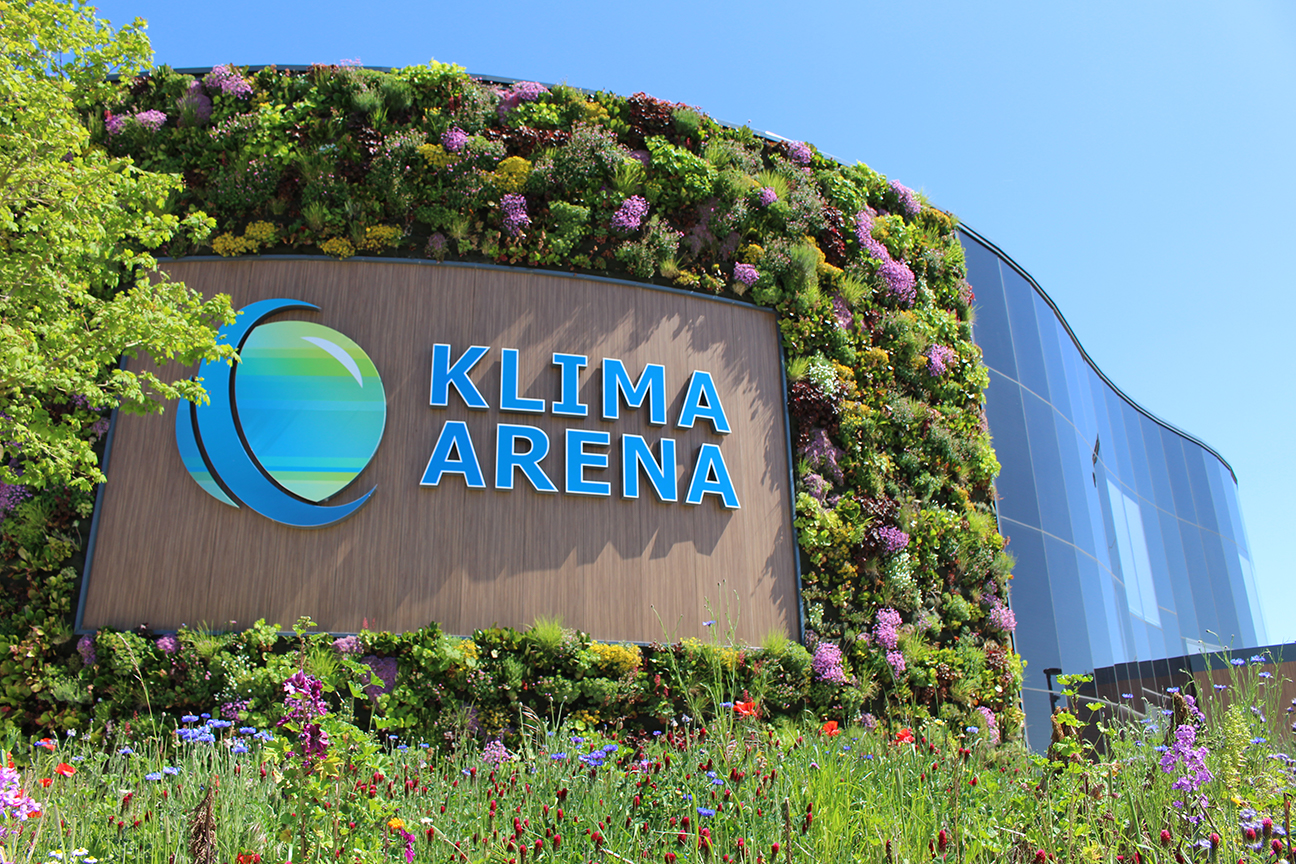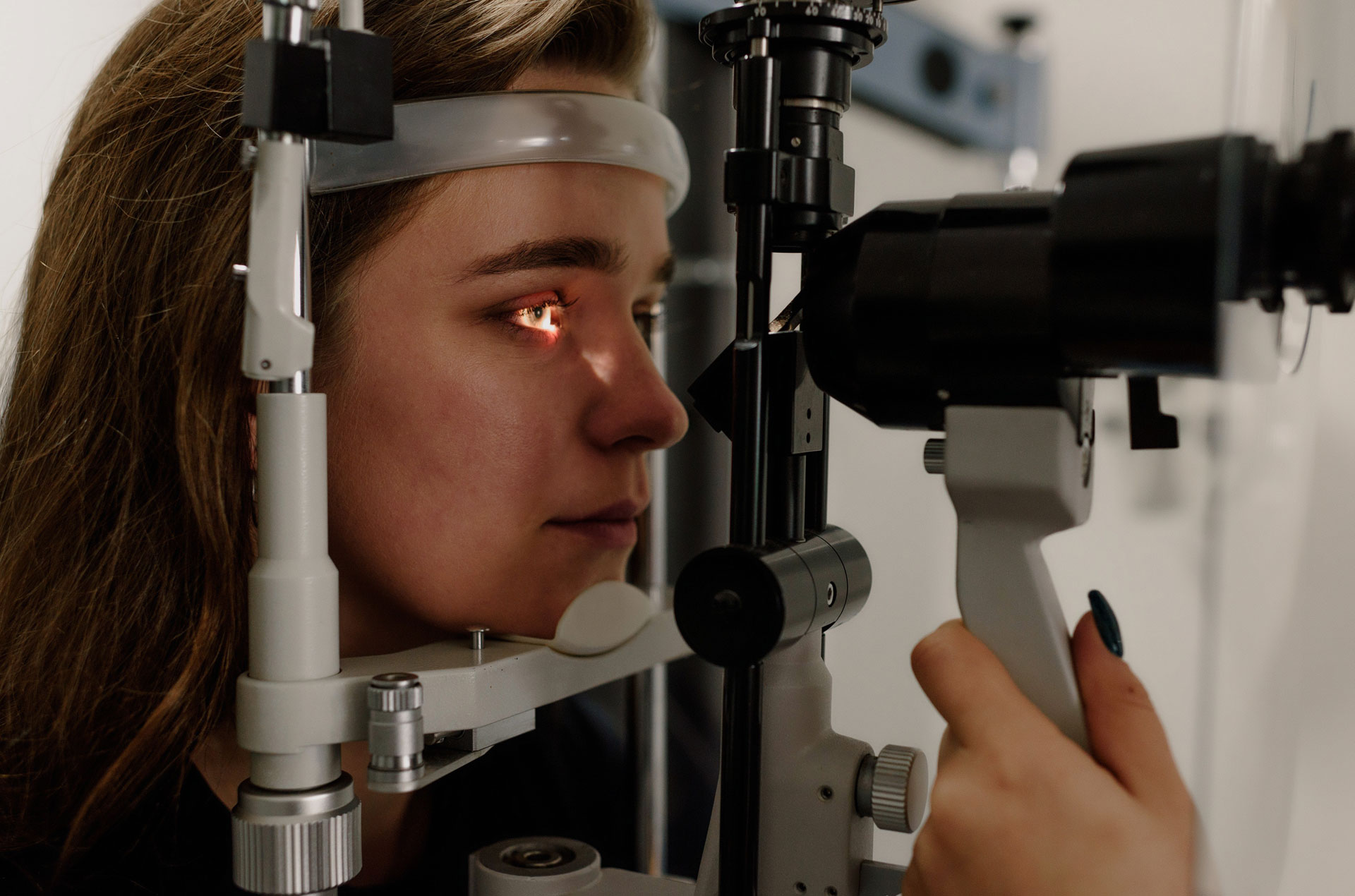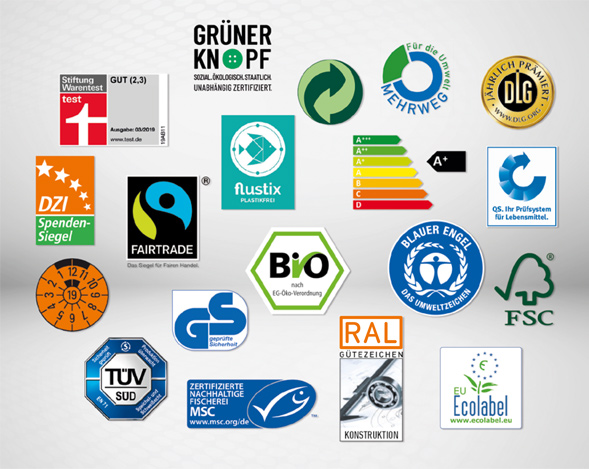To ensure that consumers can rely on labels, it is essential that they fulfil certain criteria. Only those labels that are objective, transparent and always fully up to date can provide reliable guidance to consumers. In order to ensure that reputable labels fulfil these important characteristics, it requires:
- clear and verifiable award criteria that can be viewed by consumers
- the involvement of independent and expert bodies in the development of the award criteria
- regular and independent inspections to ensure compliance with the award criteria
- regular revisions of the award criteria to ensure that they comply with the latest technological standards and new findings
- the mutual independence of the awarding body, licence holders and testing institutions
- a label with a distinctive visual design that prevents it from being confused with other labels
In order to provide guidance in the search for high-quality products and services, RAL has produced the brochure “The ABC of labelling”. This brochure provides an overview of the reliable labels that are well-known and widely used in Germany. The guide also provides information on the organisations behind the labels and the characteristics associated with them.
Consumer protection associations also recommend RAL Quality www.label-online.de
RAL Quality Marks: Labels that you can trust
RAL Quality Marks have been independent and transparent labels for more than 95 years. In particular, they stand out due to their neutrality, reliability and up-to-date nature.
RAL Quality Marks are awarded based on Quality Assurance and Test Specifications. These specifications are developed as part of an objective process with the involvement of independent and specialist institutions such as consumer and industry associations, ministries and testing institutions. RAL Quality Marks are thus independent. They are also transparent because the Quality Assurance and Test Specifications are published and can be viewed at any time.
They cover all of the essential aspects that are important for the use of a product or service, such as their efficiency, safety, durability, environmental friendliness and customer service provision. Therefore, a RAL Quality Mark stands for first-class, specialist standards and a clear commitment to quality across all aspects of the product or service at all times.
Always up to date
Technological advances, innovations and the changing requirements of customers mean that the range of products and services available on the market is continuously evolving to keep pace with our constantly changing times. This means that the RAL quality assurance system also has to constantly evolve. On the one hand, this is achieved through the regular creation of new RAL Quality Marks that focus on the latest developments, while on the other hand, regular revisions of the Quality Assurance and Test Specifications ensure that the RAL Quality Marks are always kept fully up to date. Even RAL Quality Marks that have acted as guides for reliability and high quality over many years also have to be adapted to meet the latest challenges and requirements.
Rapidly growing product range leads to new quality marks
 Vertical greening, also known as vertical gardens, are all the trend. They are popular on interior walls because they create a natural atmosphere, improve the climate in the room, regulate the air humidity and even absorb noise, while on exterior walls they improve the look of façades, clean the air and provide living spaces for insects and birds. The installation of vertical greening requires special technical expertise in the gardening sector. Anybody who is looking for a competent supplier can rely on the new RAL Quality Mark for Vertical Greening. It was approved in February 2021 and is only awarded to those companies who ensure that all of their work processes comply with strict requirements from the planning stage and the selection of the right building materials and plants through to the maintenance of the building structure.
Vertical greening, also known as vertical gardens, are all the trend. They are popular on interior walls because they create a natural atmosphere, improve the climate in the room, regulate the air humidity and even absorb noise, while on exterior walls they improve the look of façades, clean the air and provide living spaces for insects and birds. The installation of vertical greening requires special technical expertise in the gardening sector. Anybody who is looking for a competent supplier can rely on the new RAL Quality Mark for Vertical Greening. It was approved in February 2021 and is only awarded to those companies who ensure that all of their work processes comply with strict requirements from the planning stage and the selection of the right building materials and plants through to the maintenance of the building structure.
 Another new label is the RAL Quality Mark for Optometric Services that was created in May 2020. Services dealing with the visual system consisting of the eye, retina and optic nerve that are provided by optometrists make an important contribution to preserving people’s eyesight. Optometric tests and measurements are not only used to determine the correction values for lenses but also to identify anomalies and diseases in the eye that require treatment from an ophthalmologist. The Quality Assurance and Test Specifications for the award of this new quality mark cover all stages of the eye examination, i.e. checking the medical history, measuring the refraction to determine the visual defect and identify the required glasses, determining the visual acuity, examining the anterior and posterior segments of the eye and discussing the results with the patient and making recommendations.
Another new label is the RAL Quality Mark for Optometric Services that was created in May 2020. Services dealing with the visual system consisting of the eye, retina and optic nerve that are provided by optometrists make an important contribution to preserving people’s eyesight. Optometric tests and measurements are not only used to determine the correction values for lenses but also to identify anomalies and diseases in the eye that require treatment from an ophthalmologist. The Quality Assurance and Test Specifications for the award of this new quality mark cover all stages of the eye examination, i.e. checking the medical history, measuring the refraction to determine the visual defect and identify the required glasses, determining the visual acuity, examining the anterior and posterior segments of the eye and discussing the results with the patient and making recommendations.
Progress through revision
 Due amongst other things to their cost efficiency, flat roofs offer many advantages, such as interior spaces without slanted ceilings, space for the installation of solar power plants and the ability to install roof gardens, both in commercial buildings and also residential houses. A current example of how existing labels remain fully up to date is provided by the quality assurance system for flat roof systems and services. The quality mark has up to now covered services such as the new installation of flat roofs, roof renovation and repair, roof maintenance and support with inspections and surveys, as well as leak testing services and the installation of solar and photovoltaic power plants and roof gardens. The quality assurance system was fully revised and expanded in July 2021 and will now also covers products for the covering of flat roofs in the future.
Due amongst other things to their cost efficiency, flat roofs offer many advantages, such as interior spaces without slanted ceilings, space for the installation of solar power plants and the ability to install roof gardens, both in commercial buildings and also residential houses. A current example of how existing labels remain fully up to date is provided by the quality assurance system for flat roof systems and services. The quality mark has up to now covered services such as the new installation of flat roofs, roof renovation and repair, roof maintenance and support with inspections and surveys, as well as leak testing services and the installation of solar and photovoltaic power plants and roof gardens. The quality assurance system was fully revised and expanded in July 2021 and will now also covers products for the covering of flat roofs in the future.
 Another example of the future-proof nature of RAL Quality Marks is provided by the RAL quality assurance system for engine repairs – from passenger PKW and LKW engines through to marine engines. This RAL Quality Mark provides customers with good guidance for reliable repair work. The Quality Assurance and Test Specifications cover all of the most important maintenance work on engines – from the repair of individual engine parts through to the general reconditioning of the entire engine – with the aim of restoring or optimising its original characteristics and properties. As part of the latest revision, the Quality Assurance and Test Specifications were completely revised and rewritten.
Another example of the future-proof nature of RAL Quality Marks is provided by the RAL quality assurance system for engine repairs – from passenger PKW and LKW engines through to marine engines. This RAL Quality Mark provides customers with good guidance for reliable repair work. The Quality Assurance and Test Specifications cover all of the most important maintenance work on engines – from the repair of individual engine parts through to the general reconditioning of the entire engine – with the aim of restoring or optimising its original characteristics and properties. As part of the latest revision, the Quality Assurance and Test Specifications were completely revised and rewritten.


